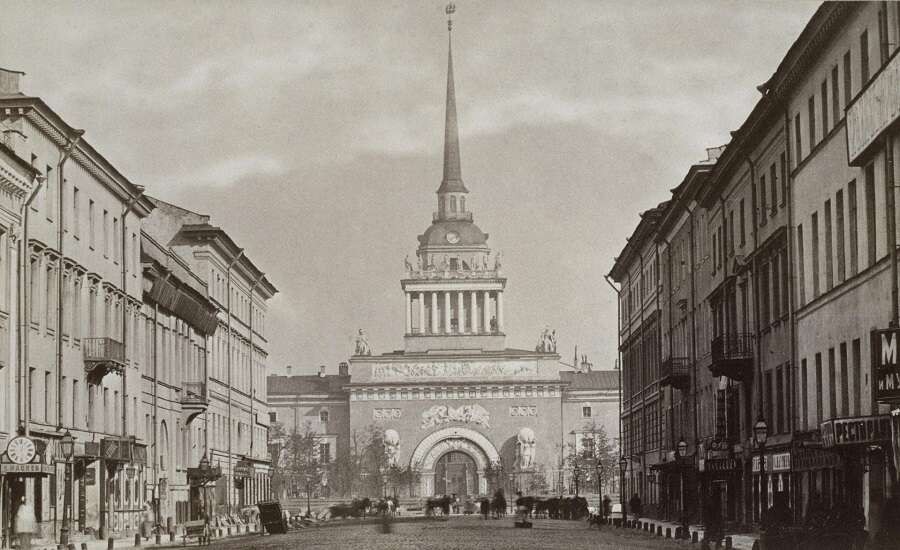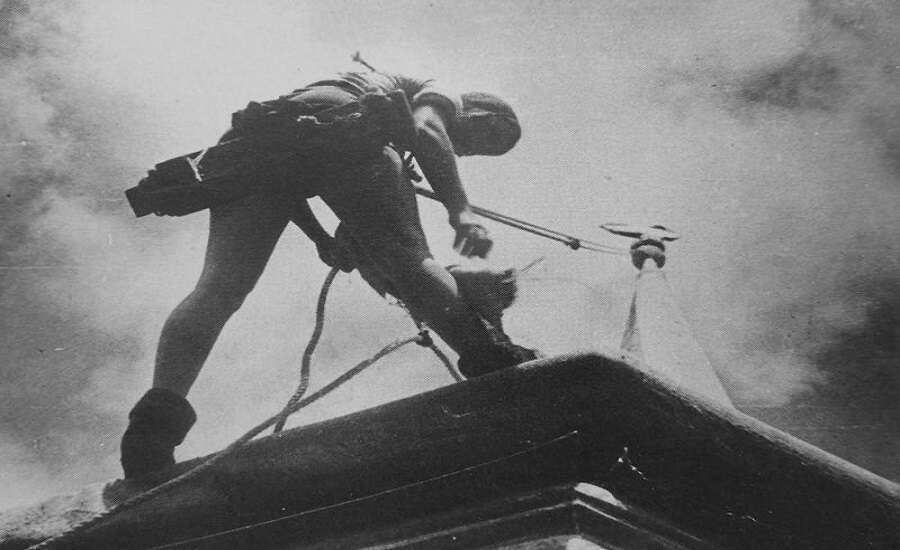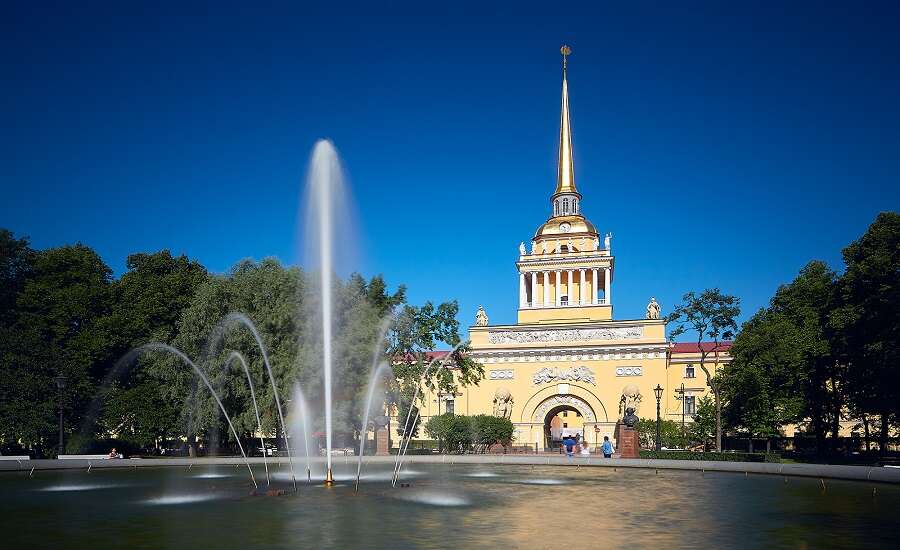
Photo from https://www.hermitagemuseum.org/
Construction of the Admiralty began in 1704 in accordance with Peter the Great’s personal designs. It was not just a shipyard but a fortress for the emerging capital, complete with bastions and a moat. In all, 262 warships were built in the Admiralty over the next 140 years.
Did you know? Ship drawings and models from Peter the Great’s own collection formed the basis of the Central Naval Museum, a must-visit for those interested in Russian maritime history.
In 1719, a model ship was installed on a weather vane high above the Admiralty. The model replicated the first ever Russian warship, built in the 17th century, and had flags made of solid gold. This ship has become one of the historic symbols of St Petersburg.
Did you know? The original model weighs approximately 65kg and is covered by two kilograms of pure gold. You can see it in the Central Naval Museum.
Allegedly, the personal compass of Peter the Great was placed in the bow of the model ship.
The Admiralty was a focal point of St Petersburg’s city plans. Three main arteries - Nevsky Prospekt, Voznesensky Prospekt, and Gorokhovaya Ulitsa - diverge from its central tower. Today, standing at any point along these kilometres-long streets, the Admiralty’s gilded spire is visible.
The complex was rebuilt a number of times, but the version present today was constructed at the start of the 19th century by architect Andreyan Zakharov. This final design glorified the Russian Navy in a magnificent example of Russian Classicist architecture - harmoniously symmetrical, stretching for over 400 metres along the banks of the Neva, and dominated by a 72.5m tall central tower with an Empire-style arch, colonnade, gilded dome and spire.
Did you know? The Admiralty is decorated with 56 statues representing Greek and Egyptian Gods, the elements, the seasons, patron saints of shipbuilders and more. There are 28 statues above the colonnade alone!

Photo from http://waralbum.ru/
The Admiralty changed hands numerous times in the tumultuous revolutionary years, and during Soviet times it housed the Dzerzhinsky Institute of Naval Engineering and the naval base of the Baltic Fleet.
Did you know? During repair works undertaken in 1977, a special container holding the Soviet Constitution was installed underneath the ship weather-vane.
During Soviet times, a nuclear reactor operated in the Dzerzhinksy Institute to allow cadets to practice controlling a nuclear submarine. After the Chernobyl catastrophe, the reactor was shut down.

Photo from https://photocentra.ru/
The High Command of the Russian Navy moved to the Admiralty in 2012. The Admiralty Shipyard still operates, but has been moved to the western edge of St Petersburg where the Neva meets the Gulf of Finland.
As a military headquarters, the Admiralty is closed to the public. However, there are plenty of attractions to enjoy nearby:
Address: Admiralteyskiy Prospekt, 1, St Petersburg, 191186
Metro: Admiralteyskaya (450m), Nevsky Prospekt (1km)
Join us on Facebook
We invite you to become a fan of our company on Facebook and read Russian news and travel stories. To become a fan, click here.
Join our own Russian Travel, Culture and Literature Club on Facebook. The club was created to be a place for everyone with an interest in Russia to get to know each other and share experiences, stories, pictures and advice. To join our club, please follow this link.